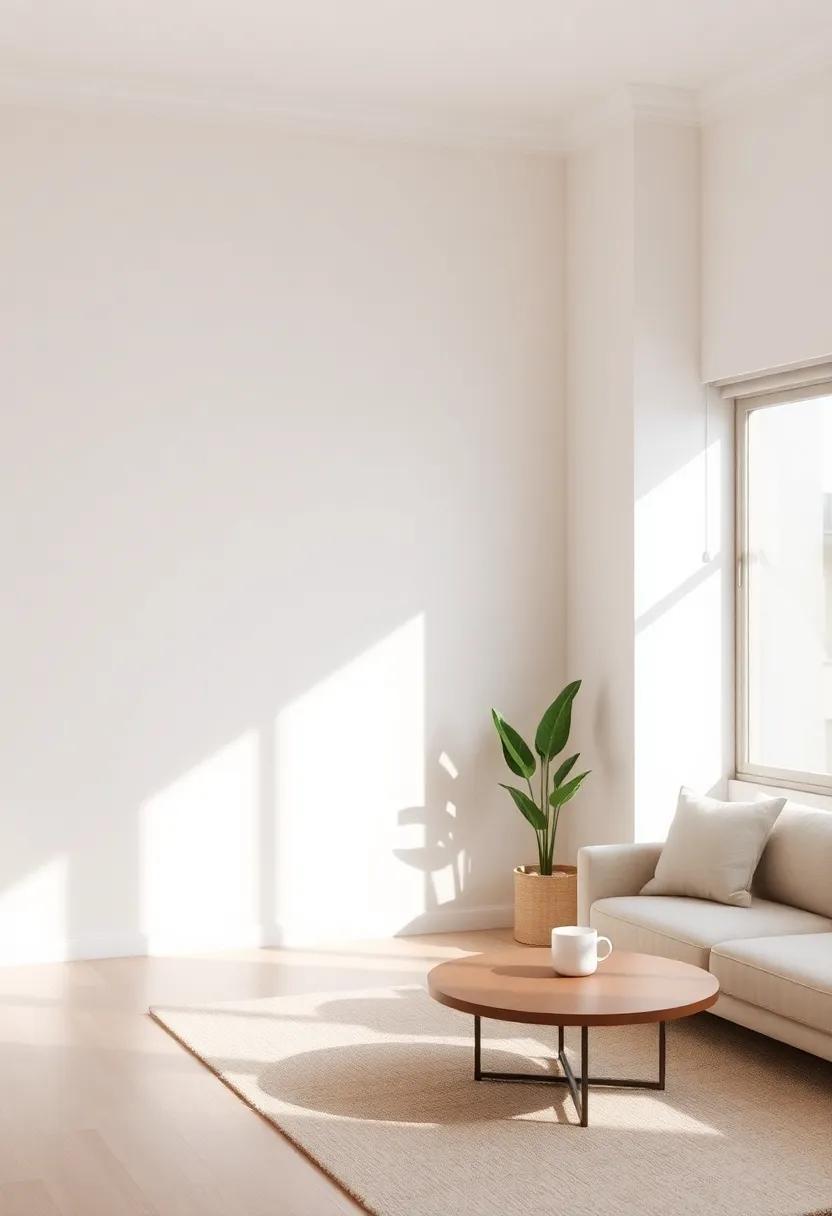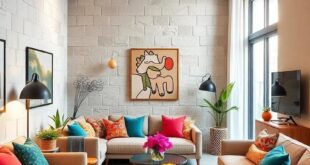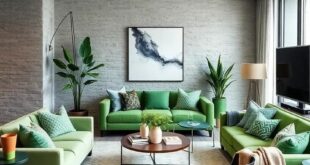In a world brimming with chaos and constant stimulation, the search for serenity becomes paramount. The living room, frequently enough the heart of our homes, holds the potential to be a sanctuary—a peaceful retreat where one can unwind and recharge. Embracing a neutral minimalist aesthetic offers not only a visual calm but also a valuable framework for invigorating our daily lives with simplicity and purpose. This article invites you on a journey through the art of curating minimalist living room color palettes that evoke tranquility and clarity. By exploring the harmonious interplay of soft hues, warm tones, and elegant textures, we’ll uncover how to transform your space into an oasis of serenity, fostering an environment where relaxation flourishes and creativity thrives. Join us as we delve into the world of neutral palettes, designed to inspire balance and peace in every corner of your living room.
Embracing Soft Hues for a Peaceful Living Room Ambiance
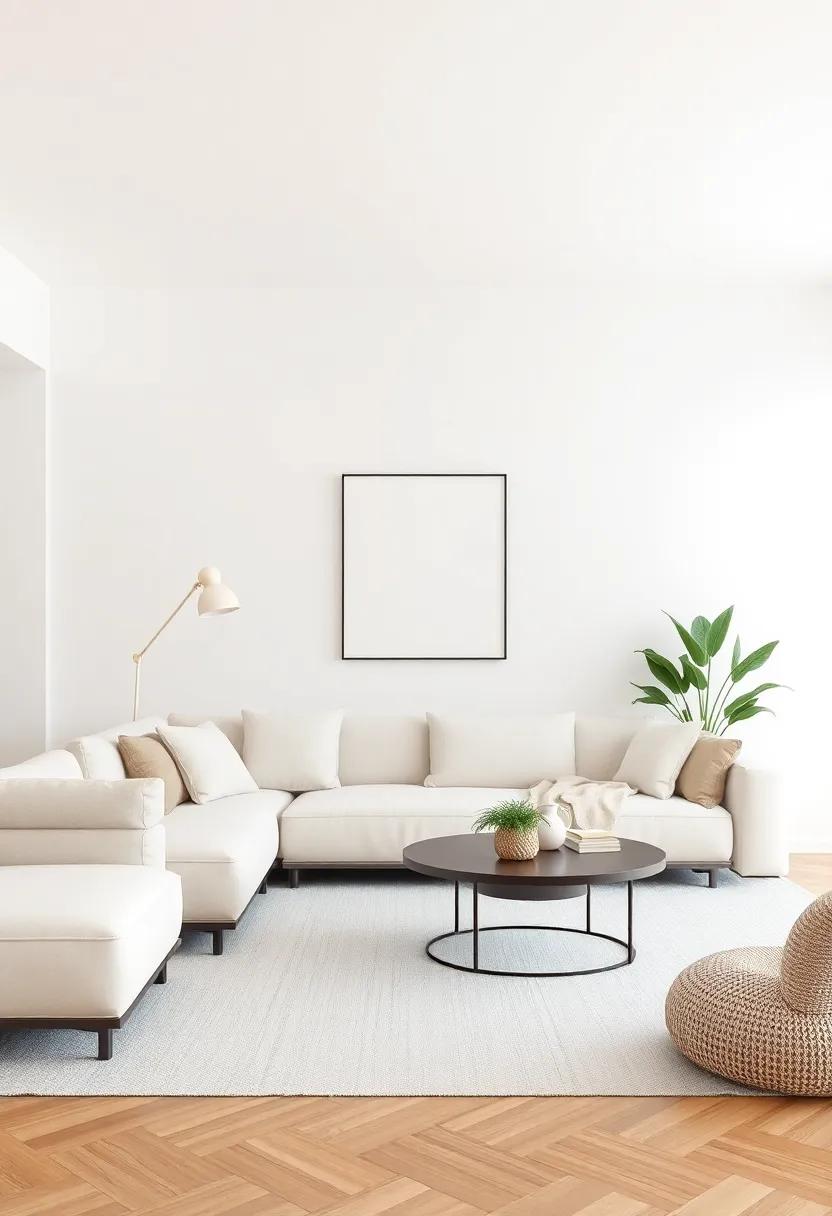
to cultivate a space that exudes calm and tranquility, incorporating soft hues into your living room design is essential.Shades like pastel blues, gentle greens, and muted pinks can transform a room into a serene retreat. These colors not only create a tranquil atmosphere but also have a remarkable ability to complement one another,forming a cohesive palette that pleases the eye.Consider layering these colors through your furniture, curtains, and decorative accents to enhance the peaceful vibe you’re aiming for.
When selecting your palette,think about the emotional response that various shades evoke. Soft hues can soothe the senses and promote relaxation. For inspiration, refer to the table below that outlines some of the most effective color combinations:
| Color Combination | Emotional Effect |
|---|---|
| Pastel Blue & White | Calming & Airy |
| Soft Green & Cream | Refreshing & Restorative |
| muted Pink & Gray | Warm & Cozy |
| Lavender & Soft Yellow | Cheerful & Uplifting |
Incorporating these shades into your furniture and accessories—think light-colored sofas, throw pillows, and art pieces—will further enhance the sense of peace in your living space. Use natural materials like wood and textiles in complementary soft hues to maintain a clean and minimalist aesthetic. This balance of gentle tones and textures will help to create an inviting atmosphere where you can relax and rejuvenate.
The Beauty of Earthy Tones in Minimalist Designs
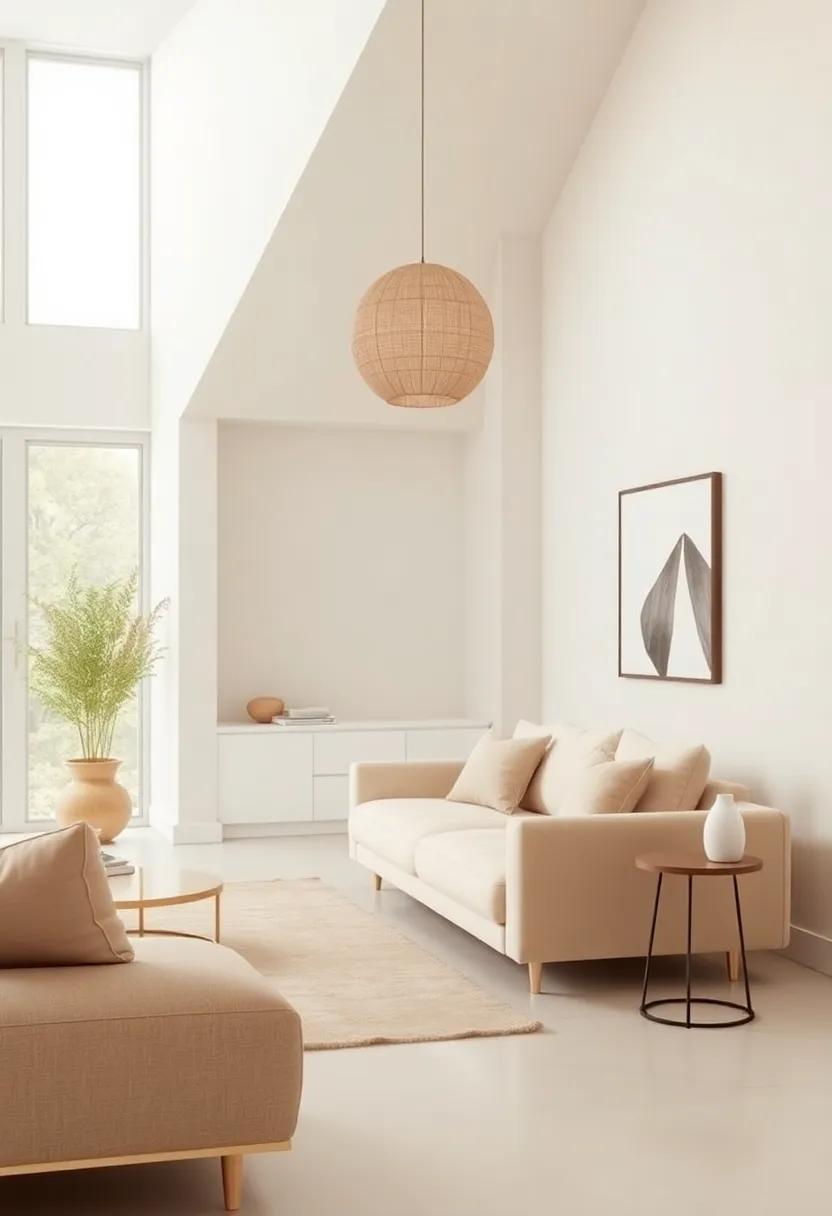
Earthy tones offer a soothing palette that evokes a sense of calm and connection to nature, making them a perfect choice for minimalist interior designs. These hues—ranging from soft browns and muted greens to gentle beiges—create a harmonious atmosphere that allows for flexibility and creativity in decoration. Incorporating these shades can help foster a tranquil environment, encouraging relaxation and mindfulness. Many find that when earthy tones are used in furniture and accents, they not only ground the space but also enhance its overall aesthetic appeal.
To fully embrace the beauty of earthy tones, consider the following elements in your living room design:
- Natural Textures: Incorporate materials such as wood, stone, and linen to complement the color scheme.
- Layering Shades: Use a combination of lighter and darker earthy tones to add depth and dimension.
- Strategic Accents: Introduce plants, clay pots, or woven baskets to bring organic shapes and warmth into the space.
By thoughtfully selecting and combining these colors and elements, you can cultivate a minimalist living room that not only feels spacious but also exudes an inviting, serene ambiance.
Layers of Textures: Adding Depth to Neutral Color Schemes
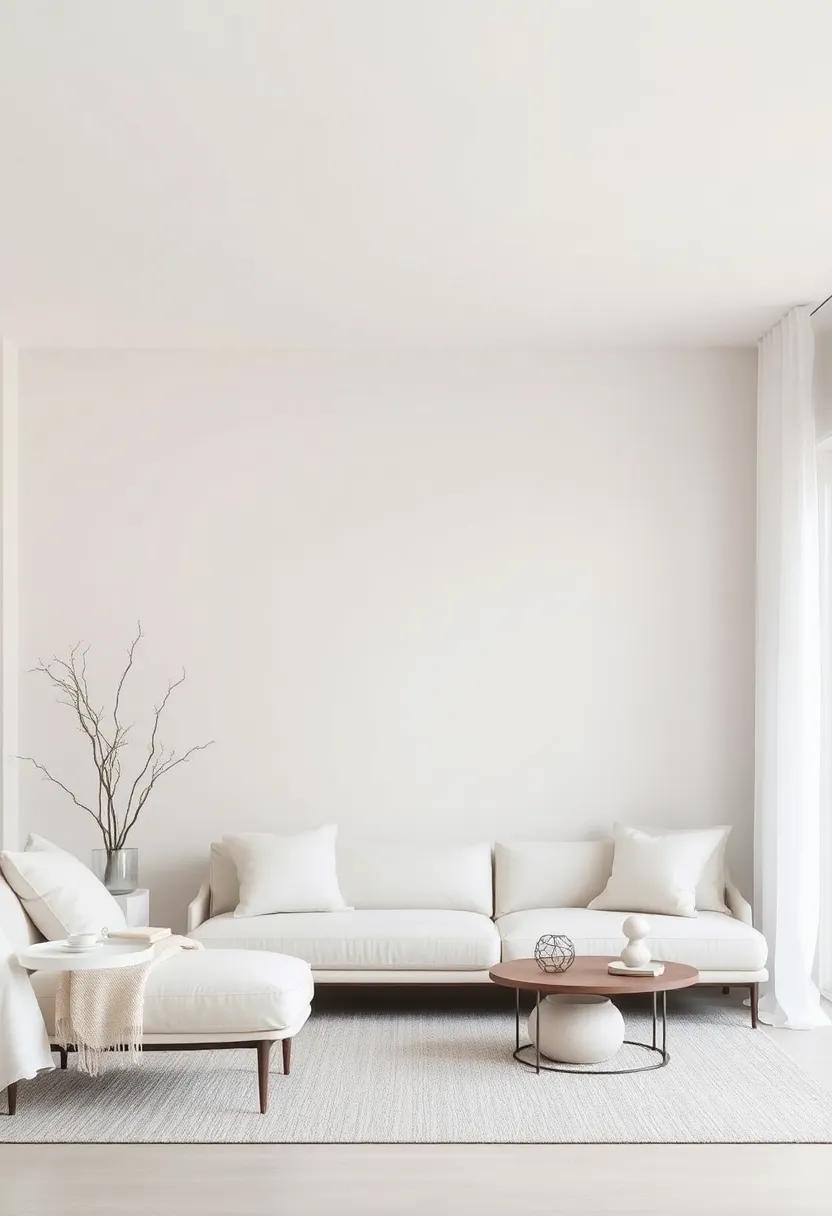
To infuse a sense of depth into a neutral palette, layering textures becomes essential. Consider integrating a variety of materials to create visual interest without relying on bold colors. As a notable example, you might utilize:
- Linen and Cotton: Soft furnishings like cushions and throws
- Wood: A reclaimed coffee table or accent pieces
- Metal: Subtle metallic accessories or light fixtures
- stone: Textured vase or decorative bowls
By strategically combining these textures, each element contributes to a cohesive yet dynamic appearance.To further enhance this concept, separating the different materials with varying shapes and sizes can definitely help maintain a flow while avoiding monotony. Here’s a simple comparison of textures that can harmonize effectively:
| Texture Type | Suggested Use | Visual Effect |
|---|---|---|
| linen | Cushions, Curtains | Softness and warmth |
| Wood | Earthy, organic feel | |
| Metal | Lighting, Accessories | Subtle shine and elegance |
| Stone | Decor, Planters | Texture and grounding |
Creating a Calming Retreat with Light grays and Whites
creating a serene atmosphere in your living space is easily achievable with a palette dominated by light grays and whites. These two colors complement each other beautifully, providing a soft backdrop that invites relaxation. Weather you prefer a matte finish or a subtle sheen, the combination allows for various textures to shine through. Consider adding elements such as:
- Soft fabrics: Cushions and throws in light gray or soft white can bring comfort to your seating area.
- Natural materials: Incorporate wooden accents or rattan furniture for warmth and balance.
- Minimalist decor: Choose simple, sculptural pieces that echo the calming color scheme.
Utilizing shades like dove gray and alabaster can enhance the spacious feeling of your room while maintaining a cozy ambiance. Lighting plays a crucial role in this aesthetic; opting for warm white bulbs can soften the overall look and highlight these gentle hues. You can also create interest with a few strategically placed plants or vibrant artwork that pops against the neutral backdrop. To summarize the best practices for achieving this tranquil retreat:
| element | Suggestion |
|---|---|
| Color Palette | Light gray, soft white |
| Textiles | Cushions, throws |
| Decor | Minimalist art pieces |
| Lighting | Warm white bulbs |
| Plants | Low-maintenance greenery |
Natural Light: the Role of Sunlight in Color Perception
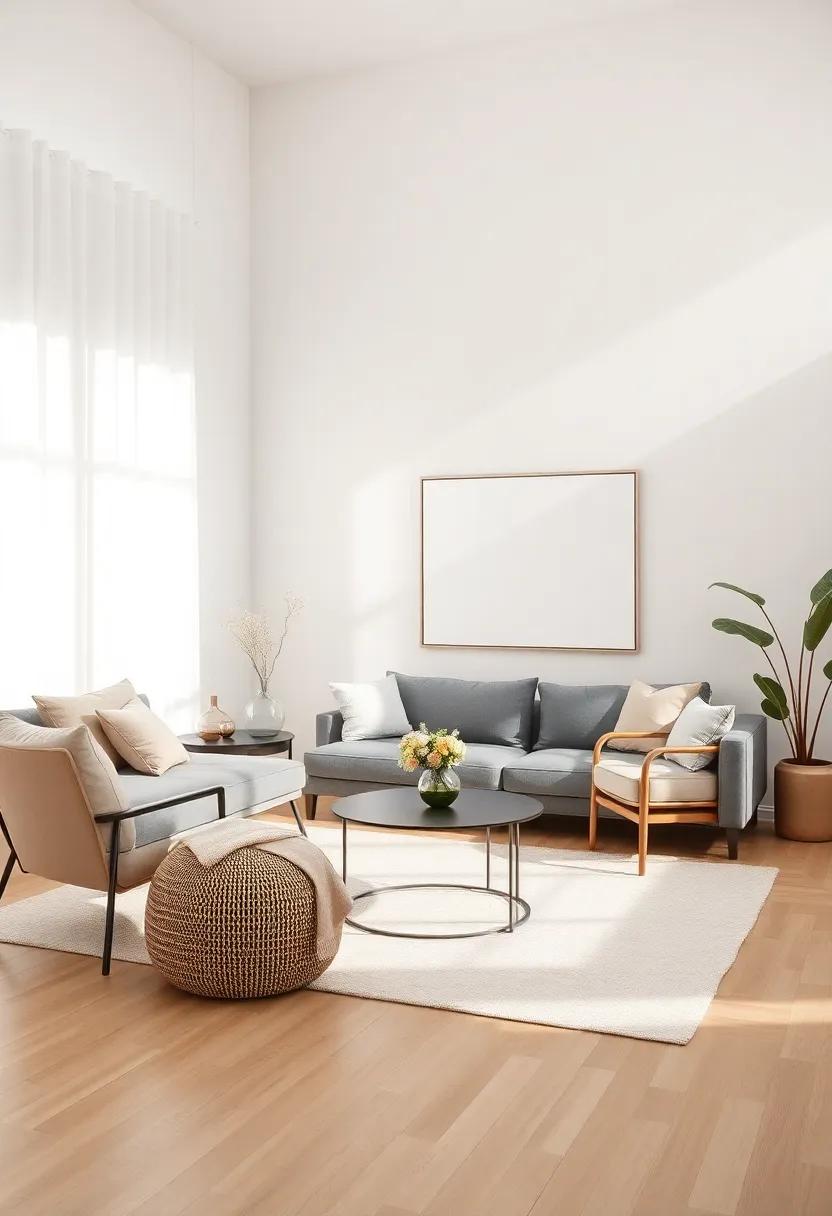
Sunlight plays a pivotal role in how we perceive color in our living spaces. The natural light that filters through our windows not only enhances the atmosphere but also influences the way colors appear throughout the day. As an example, the warm golden tones of morning light can make a crisp white wall feel soft and inviting, while the cool blues of twilight can create a serene ambiance. These varying hues can transform a neutral color palette, allowing each shade to evoke different emotions and settings. Understanding these effects can help in selecting the right hues for a minimalist living room, ensuring that they harmonize beautifully with the changing light.
To maximize the interplay between sunlight and your chosen colors, consider the following elements:
- Orientation of Your Space: South-facing rooms generally receive more consistent sunlight, which can enhance warmer colors.
- Window treatments: Sheer curtains can diffuse harsh sunlight, allowing a more gentle play of color.
- Color Choices: Light neutrals can amplify brightness, while deeper shades may offer more contrast as light changes.
Utilizing these strategies not only enhances the aesthetic appeal of your minimalist living room but also creates a space that resonates with calm and tranquility, perfectly aligned with the philosophy of neutral palettes.
Incorporating Accents with Muted Pastels for Subtle Contrast

To achieve a refined look that captivates without overwhelming,consider pairing muted pastels with carefully selected accents. The use of soft colors, such as pale lavender, dusty rose, and soft mint, creates a tranquil backdrop. These shades serve as a canvas, allowing for brighter accent pieces to shine without being jarring. Accents can include throw pillows, artwork, or decorative objects, which should be thoughtful in their color choices, perhaps in more saturated tones like berry red or mustard yellow. This combination results in a harmonious balance, allowing each element to play its part while maintaining the soothing essence of the room.
In your design, consider the placement of these accent pieces to amplify their impact.Aim for a distribution that feels intentional yet effortless. Here are some tips for incorporating accents effectively:
- Layering textures: Use varying textures to create depth in your muted pastel schemes.
- Strategic Placement: position brighter items at eye level or in clusters to draw attention.
- Natural Elements: Integrate plants with green hues that contrast subtly against pastel walls.
This approach not only enhances visual interest but also fosters an atmosphere of serenity, making your living space both inviting and calm.
Finding Harmony with Monochromatic Color Combinations
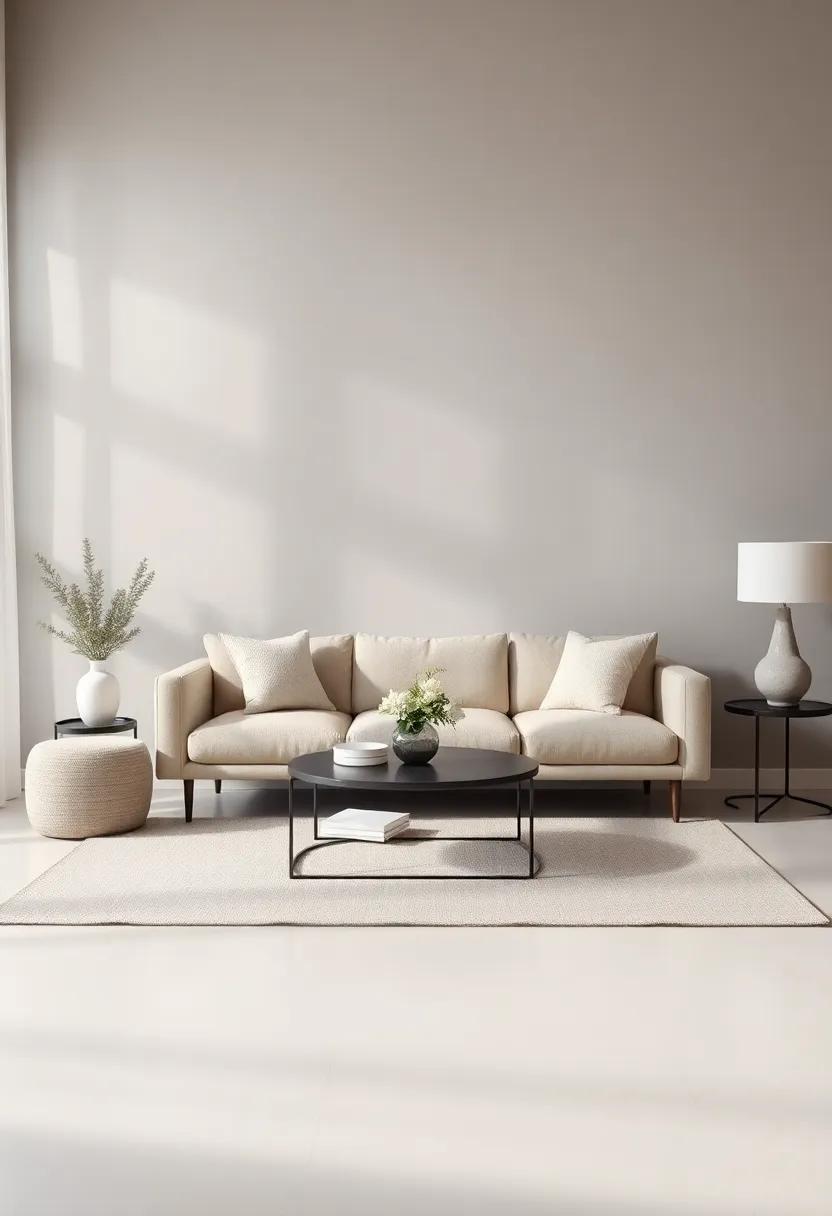
Monochromatic color schemes offer an effortless way to create a cohesive and serene atmosphere in your living room. By relying on various shades and tones of a single color, you can maintain a calm and inviting environment, perfect for relaxation. When selecting your base color, consider the emotional response you wish to evoke; for example, soft blues can instill tranquility, while muted greens can promote a sense of balance and rejuvenation. Pairing different textures—like a plush velvet sofa with a sleek satin throw or natural wood accents—enhances the depth of your chosen hue, making the space visually rich without overwhelming the senses.
To effectively implement this approach,focus on key elements:
- Layering Textures: Combine various fabrics such as linen,wool,and cotton to maintain interest while adhering to your monochromatic palette.
- Accent pieces: Introduce darker or lighter shades through decorative items like cushions, rugs, or wall art to break any monotony.
- Natural Elements: incorporate plants or natural wood to add warmth and organic appeal, complementing your color choice.
Ultimately, a prosperous monochromatic scheme hinges on harmonizing different elements while ensuring that each piece contributes to the overall aesthetic. Considering these aspects will facilitate a minimalist yet sophisticated living room that embodies tranquility and simplicity.
Bringing the Outdoors In: Greenery and Neutral Palettes
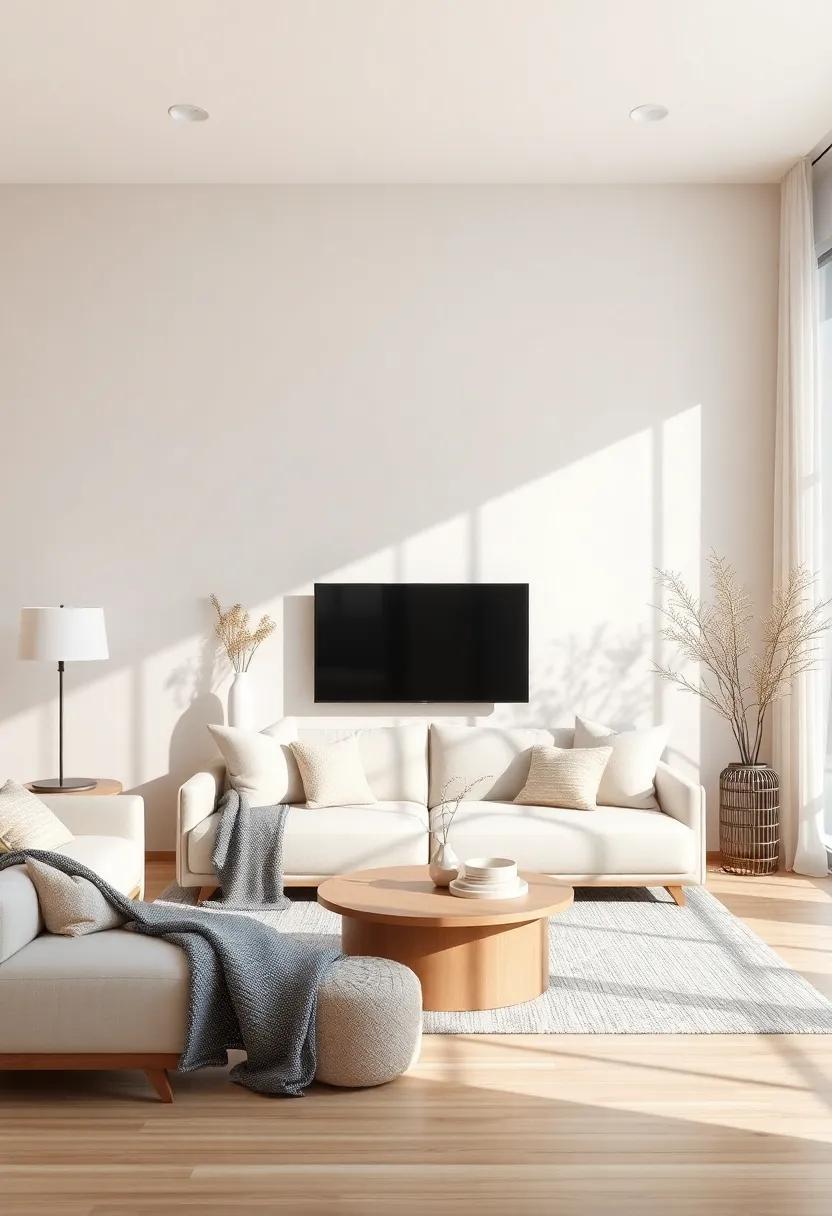
Incorporating plants into your living space not only enhances the aesthetic appeal but also fosters a sense of calm and well-being. Greenery acts as a natural bridge; it brings the vibrant hues of the outdoors into your neutral palette, creating a harmonious balance between color, texture, and nature. choose a variety of indoor plants like:
- Snake Plant – known for its air-purifying qualities
- Pothos - perfect for hanging arrangements that add vertical interest
- peace Lily - brings tiny white blooms to soften minimalist designs
This approach not only instills a sense of serenity but also invigorates your living room with life. pair these plants with sustainable materials—perhaps a jute rug or a wooden coffee table—to create layers of texture that complement the soothing neutral tones. To optimize the impact of greenery, consider the following layout ideas:
| Plant Location | Effect |
|---|---|
| Windowsill | Maximized light exposure |
| Corners | Creates cozy nooks |
| Coffee Table | Inviting centerpiece |
Choosing the Right Furnishings to Enhance Serenity
When curating your furnishings, prioritize pieces that evoke a sense of calm and simplicity. Aim for a cohesive look by selecting soft textures and gentle lines, which can emphasize the tranquil atmosphere you desire. Consider incorporating materials such as linen, wood, and ceramic that not only look beautiful but also bring a warm, natural feel to your space. Think about including:
- Light-colored sofas that invite relaxation
- Natural fiber rugs for warmth and comfort
- Plants that add a breath of fresh air and vitality
To enhance your serene environment, focus on multi-functional furnishings that promote simplicity without clutter.A minimalist coffee table can serve as a focal point, while also providing space for stylish storage solutions.Consider organizing your essentials with an attractive bookshelf or floating shelves, which can keep the atmosphere airy and open. You might also explore:
| Furnishing Type | Benefits |
|---|---|
| Sofa Bed | Space-saving and practical for guests |
| Ottoman | Adds seating and doubles as storage |
| Side Tables | Functional and stylish accent pieces |
Reflective Surfaces: The Impact of Mirrors in Minimalist Spaces

In the realm of minimalist design, the inclusion of reflective surfaces can profoundly alter the perception of space.Mirrors, in particular, serve as both functional objects and artistic statements, amplifying natural light and creating the illusion of expansive openness. By strategically placing them within a neutral color palette, you can enhance the serenity of your living room while maintaining an uncluttered aesthetic. Consider positioning mirrors in the following ways to redefine your space:
- Opposite windows: To maximize light reflection.
- Above low furniture: To draw the eye upwards.
- In corners: To create an illusion of depth.
furthermore, the design of the mirrors themselves can contribute to the overall minimalist theme. Opting for simple frames in subtle tones ensures that they harmonize with the surrounding colors, rather than competing for attention.A cohesive look can be achieved with various mirror shapes that complement your decor:
| Mirror Shape | Effect |
|---|---|
| Round | Softens angles and adds warmth. |
| Square | Enhances symmetry and structure. |
| Rectangular | lengthens appearance of the space. |
Artwork as a Focal point: Selecting Pieces in Neutral tones
In a neutral living room, artwork offers an chance to serve as a standout element, enhancing the overall aesthetic without overwhelming the delicate palette. when selecting pieces in shades of beige, gray, and soft whites, consider options that resonate with calming emotions and tie together the room’s tones. Artworks featuring abstract designs, subtle textures, or even minimalist landscapes can create visual interest while preserving the serene atmosphere. Pieces that incorporate metallic finishes or soft pastels can further elevate the simplistic elegance,contributing depth without straying from the neutral scheme.
To ensure that your artwork harmonizes with other design elements, think about these factors:
- Size: Select larger pieces for expansive walls to avoid feeling lost, while smaller frames can create a gallery effect.
- Frame style: Choose minimalistic frames in wood or metal to complement the artwork without being distracting.
- Placement: Hang pieces at eye level to draw attention and make them a natural focal point of the room.
Experimenting with a mix of scaled prints, monochromatic tones, and layering techniques can give your living room a fresh feel while keeping the ambiance tranquil.
Balancing Color and Space: The Art of Proportion
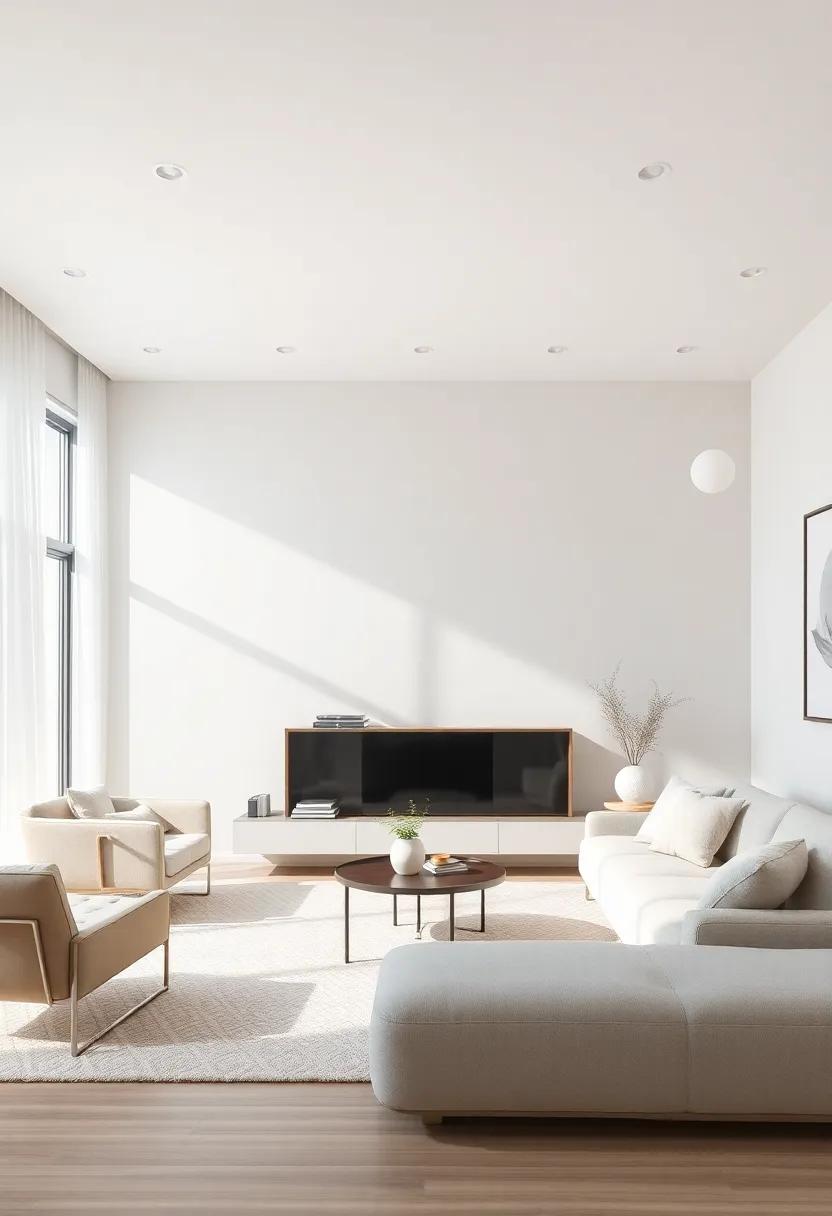
Mastering the balance between color and space is essential in achieving a harmonious living room that embodies the principles of neutrality and minimalism. Each hue interacts with the spatial elements in the room, creating a visual rhythm that can enhance or detract from the overall design. When selecting your color palette, consider the following key factors to maintain equilibrium:
- Color Proportions: Use a muted base color to ground the space, complemented by softer accents for contrast.
- Space Utilization: Ensure that bold tones are used sparingly to avoid overwhelming the serene atmosphere.
- Light Reflection: Choose colors that reflect natural light, enhancing the openness of the room while keeping the palette soft.
Incorporating these aspects allows for a thoughtful arrangement where every color decision feels intentional. Delving deeper into the relationship between color and space, consider adopting a two-tone scheme that pairs a light neutral with a darker shade, creating depth without compromising tranquility. Below is a simple portrayal of potential pairings:
| Light Neutral | Complementing Dark Shade |
|---|---|
| Soft Beige | Deep Charcoal |
| Muted Gray | Forest Green |
| Creamy White | Rich Navy |
By consciously selecting your shades and understanding their spatial dynamics, you can create a living room that not only invites relaxation but celebrates the beauty of simplicity.
Discovering the Essence of Warm Neutrals in Living Areas
Warm neutrals create an inviting atmosphere that serves as the perfect backdrop for any living space. By incorporating shades such as soft taupe, creamy beige, and warm greys, you can achieve a sense of tranquility that encourages relaxation and comfort. These colors have the unique ability to harmonize with both natural light and artificial sources, enhancing the overall ambiance of your room. When selecting furniture and décor, consider pieces that echo these warm tones; materials like wood, linen, and cotton in complementary neutrals can add depth to your space while maintaining a cohesive look.
To elevate your living area further, consider layering textures and finishes that embody warmth and simplicity. Introduce textiles such as plush throw blankets or textured pillows that provide subtle variations against the soft backdrop. Use accents with warm metallics like brass or gold to infuse a touch of elegance and sophistication. Here are a few ideas to inspire your design:
- Accent Walls: A textured wallpaper in a warm neutral adds depth to your living area.
- greenery: Incorporate houseplants in natural ceramic pots to bring the outdoors inside.
- Artwork: Choose artwork in warm hues that complement your palette, enhancing the serene vibe.
Textures and Patterns: Elevating Minimalism with Soft Details
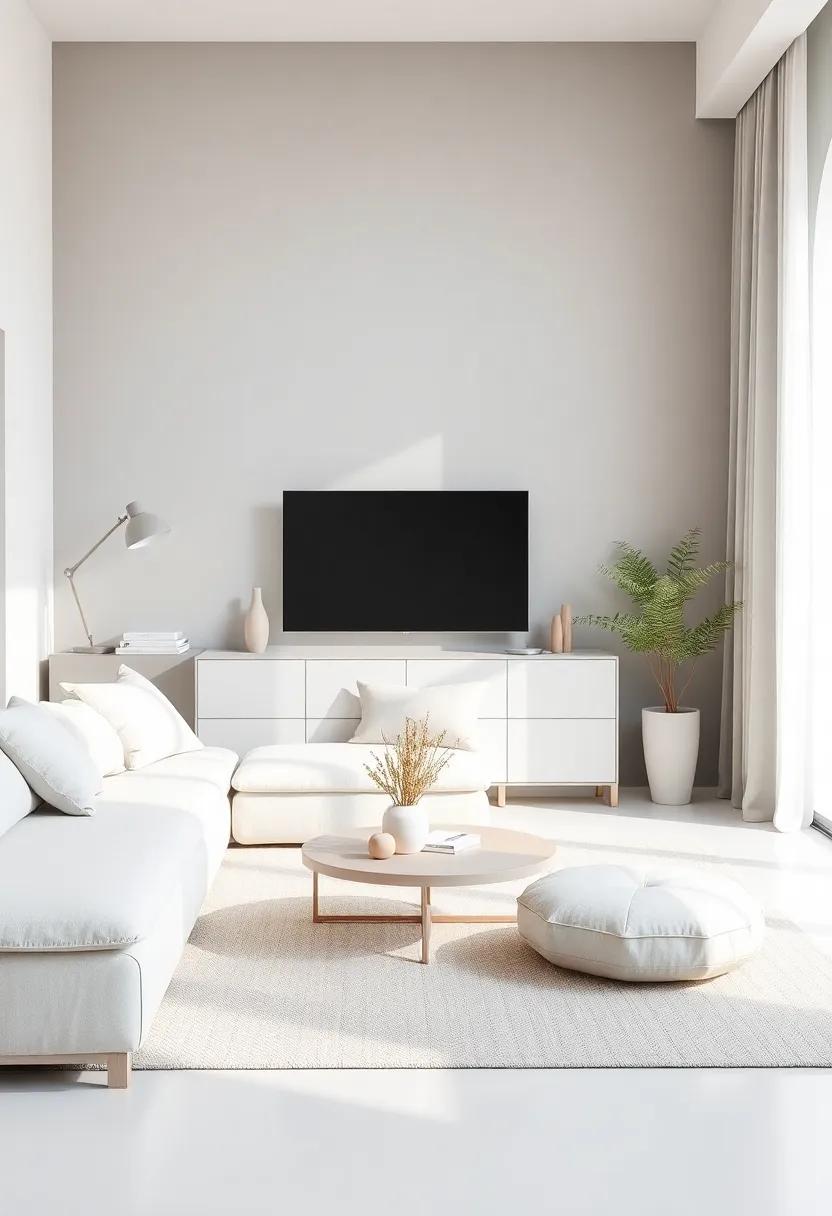
In a world where less truly is more, the introduction of subtle textures and patterns can breathe life into a minimalist living room, transforming it from a mere backdrop into a cocoon of tranquility. Consider incorporating elements like soft textiles, which not only add depth but also invite touch. Options such as a brushed cotton throw or a chunky knit blanket can create an inviting atmosphere without overwhelming the senses. Layering these soft details over sleek furniture pieces allows for a harmonious blend that celebrates simplicity while providing visual interest.
Furthermore, introducing gentle patterns can enhance the serene ambiance of a neutral color palette. Use these discreet motifs sparingly, as accents on cushions or in an area rug, to maintain the essence of minimalism. Some ideas to consider include:
- Subtle floral designs that evoke nature without competing for attention.
- Geometric shapes that bring in a modern edge while still feeling cohesive.
- Textured wallpaper in a soft hue to add dimension to an otherwise flat surface.
These details, when chosen thoughtfully, not only enrich the space aesthetically but also contribute to a feeling of ease and calm, embodying the ideals of minimalist living with a touch of warmth and comfort.
Exploring the Connection Between Color and Mood
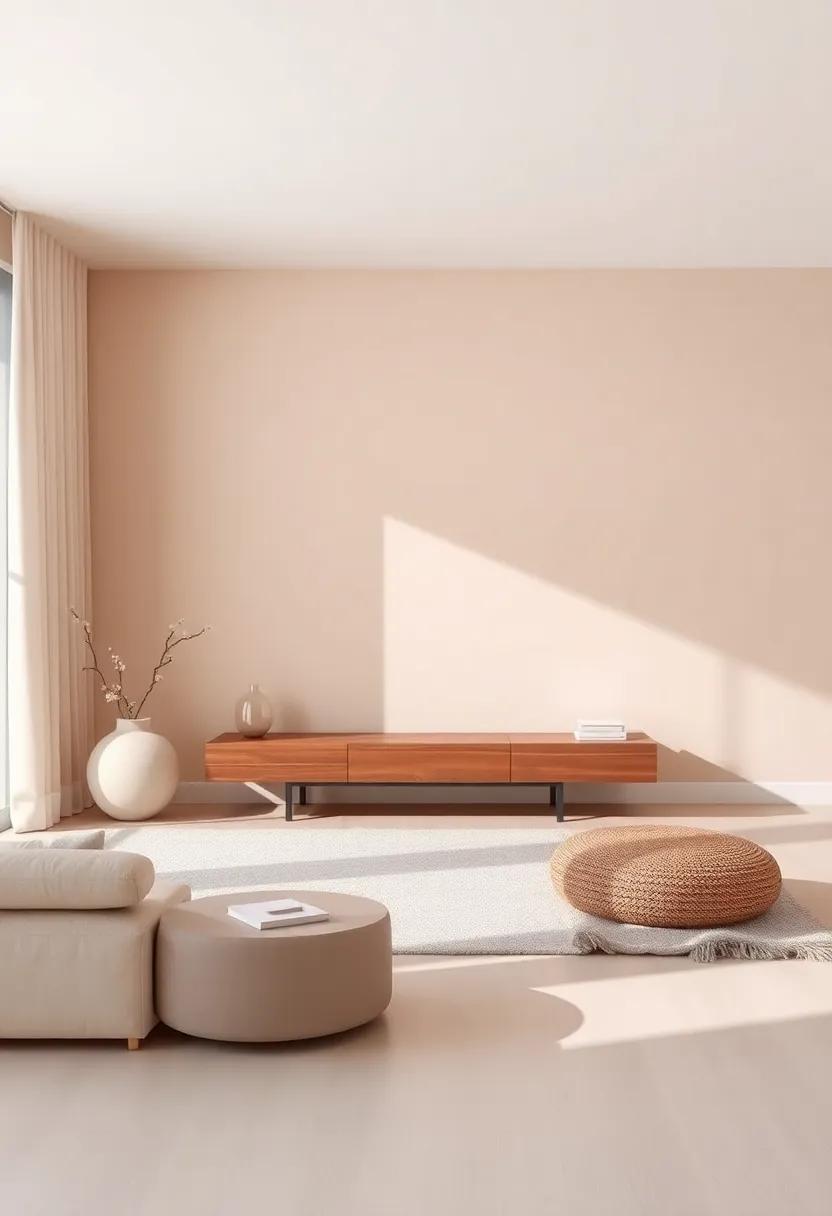
Color is more than just a visual element; it can profoundly influence our emotions and overall well-being. In the context of a minimalist living room, soothing shades and understated tones create an environment conducive to relaxation and mental clarity. Neutral colors, such as soft whites, gentle beiges, and pale grays, serve to lull the mind and establish a sense of peace. These hues can transform a space into a sanctum of tranquility, allowing you to unwind after a busy day or simply enjoy a moment of solitude. By incorporating these colors into your design, you can foster an atmosphere that encourages both mindfulness and serenity.
A palette rich in neutrals can evoke a sense of spaciousness while maintaining warmth and comfort. Textures also play a critically important role in enhancing the mood created by color; consider introducing elements like:
- Natural wood finishes for warmth
- Soft textiles like linen or cotton for a cozy feel
- Gentle lighting, such as warm LED fixtures to soften shadows and create intimacy
To further illustrate how different neutral shades can impact the mood, the following table showcases popular colors alongside their emotional effects:
| Color | Emotional Effect |
|---|---|
| Soft White | Clarity and freshness |
| Warm Beige | comfort and relaxation |
| Pale Gray | Calmness and sophistication |
Mindful Color Choices: Creating a Sanctuary That Reflects You
Choosing the right colors for your living space is a profoundly personal journey, one that allows you to express your inner self while cultivating an atmosphere of tranquility.Neutral hues such as soft taupes, warm beiges, and delicate grays can serve as a canvas upon which your individuality shines. Incorporating color thoughtfully can transform your home into a sanctuary that radiates peace and comfort. Here are some mindful considerations when selecting your palette:
- Consider Natural Light: Observe how different shades interact with sunlight at various times of the day.
- Prioritize Comfort: Choose colors that evoke feelings of warmth and calmness,creating a retreat-like environment.
- Add Subtle Depth: Combine various tones of neutrals for a layered effect, enhancing visual interest without overwhelming the senses.
Additionally, integrating textures and patterns can enrich your color story while maintaining that minimalist appeal. Be it plush fabrics or smooth ceramics, these elements can complement your chosen palette and add a tactile layer to your home. Consider utilizing a simple table to visualize ideal color combinations:
| Color | Emotion | Ideal Use |
|---|---|---|
| Soft Beige | Warmth | Wall Paint |
| Cool Gray | Calm | Accent furniture |
| Muted Green | Serenity | Decor accents |
By embracing these mindful color choices, you pave the way for a serene living space that genuinely reflects who you are and what you cherish.
The Influence of Color Psychology in Designing Serenity
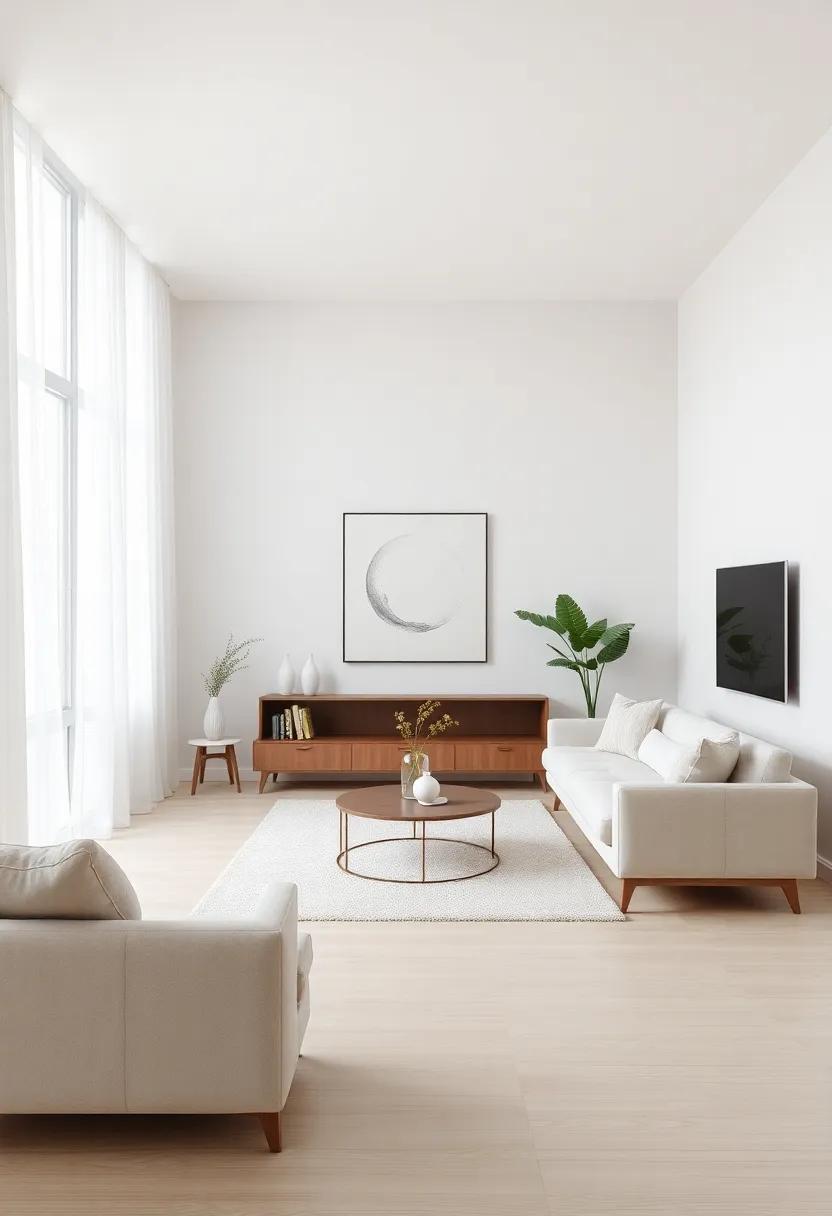
The way colors interact with our emotions is both profound and transformative, especially when it comes to creating spaces that promote calm and clarity. In the realm of minimalist design, soothing hues such as soft whites, gentle grays, and muted earth tones are pivotal. These shades not only provide a backdrop for serene living but also enable the mind to unwind from the chaos of everyday life. When selecting a color palette, consider the following influential aspects:
- Balance: Neutral tones foster a sense of equilibrium and stability in a room.
- Harmony: Colors that complement each other promote a seamless flow, enhancing the feeling of tranquility.
- light Reflection: Lighter shades can amplify natural light, creating an airy, open space.
Delving deeper into the psychology of color,it’s essential to recognize the impact that specific shades can have on mood and behavior. For instance, soft blues and greens are often associated with a sense of peace and rejuvenation, making them ideal for spaces intended for relaxation. To effectively incorporate these into your living room, you might explore combinations such as:
| Color | Emotion | Request |
|---|---|---|
| Soft Blue | calmness | Accent walls or textiles |
| Warm Beige | Cozy | Furnishings and accessories |
| Muted Green | Rejuvenation | Plants or artwork |
These combinations can help foster a serene atmosphere, ensuring your living space not only looks aesthetically pleasing but also resonates with a sense of ease and tranquility.
Building a Timeless Look with Classic Neutral Shades
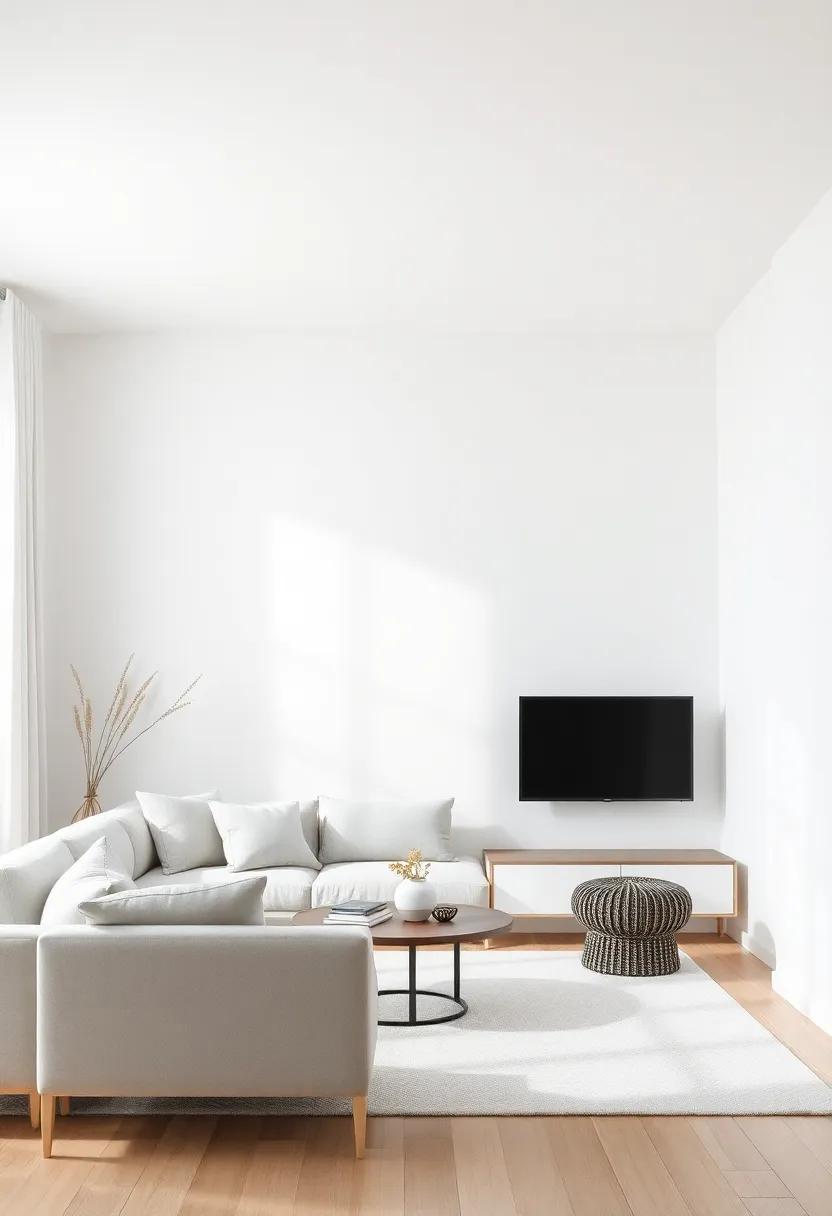
Opting for classic neutral shades can transform your living space into a tranquil retreat. These hues, ranging from soft whites to deep greys, create a serene backdrop that allows other design elements to shine. When choosing your palette, consider incorporating a variety of textures and materials to keep the space interesting while maintaining a minimalist approach. Layering soft fabrics, such as linen and cotton, with sleek, polished surfaces, like glass and metal, can enhance the depth of your space without overwhelming it.
To achieve a harmonious look, focus on a cohesive color scheme. Here are some tips for selecting your neutral tones:
- Balance Warm and Cool Tones: Combine shades like warm taupe and cool slate to create dimension.
- Accent with Earthy elements: Add objects in natural materials, such as wood or stone, to complement your color scheme.
- Incorporate Subtle Patterns: Use softly patterned textiles that maintain neutral tones to add visual interest.
by thoughtfully curating your selection of classic neutrals, you can ensure your living room remains timeless, inviting, and effortlessly chic.
Creating Visual Interest through Layered Monochrome
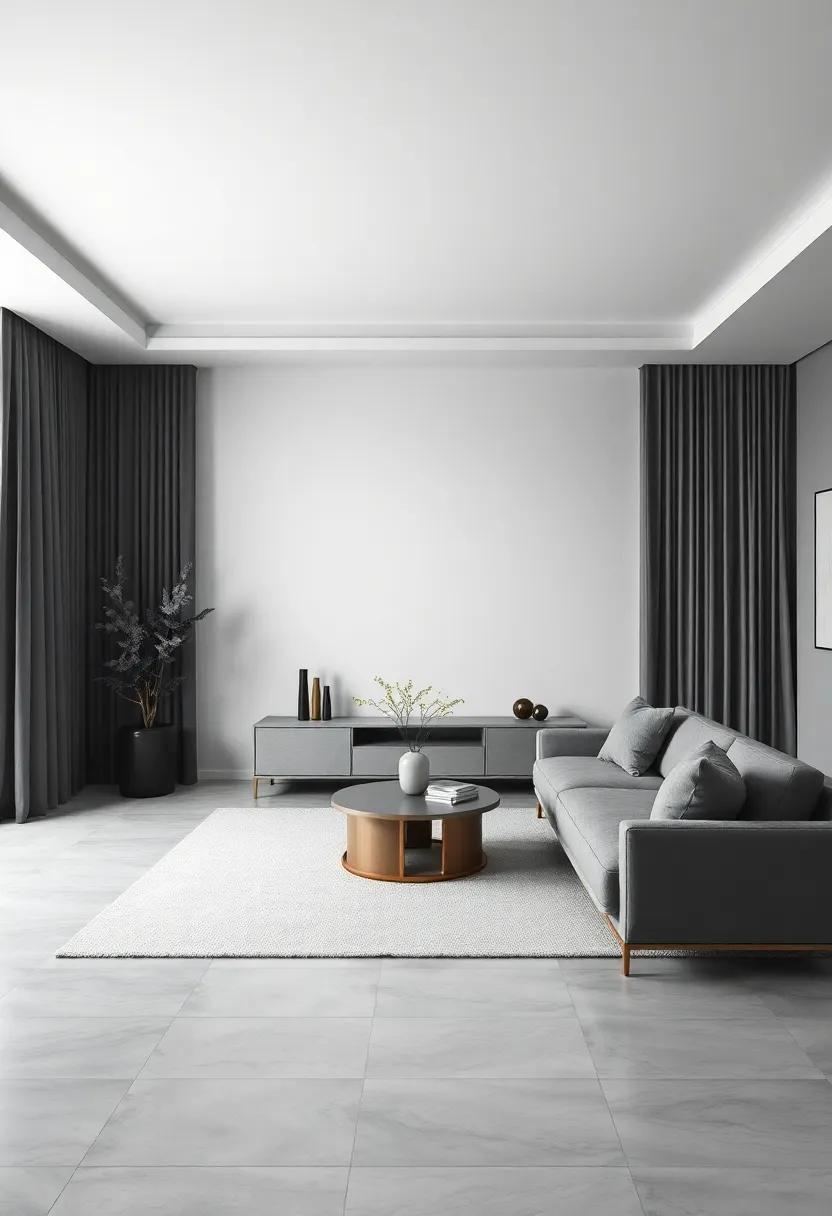
layered monochrome schemes are an excellent way to cultivate a serene atmosphere in a minimalist living room. By selecting a single hue and exploring its various shades and tones, you can create depth and visual intrigue without straying from the calm aesthetic of neutral palettes. Consider incorporating textures through soft furnishings, wall treatments, or decorative accents to enhance the monochrome effect. Some thoughtful layering techniques include:
- Vinyl wall panels: Add dimension with a subtle pattern.
- Woven textiles: Use cushions and throws that vary in texture.
- Artistic accents: Consider monochrome artworks that reflect the chosen hue.
Additionally, varying the intensity of your selected color allows you to play with visual weight while maintaining the overall tranquility of the space. Light and dark variations can guide the eye throughout the room, highlighting areas and creating intimate nooks for relaxation. to ensure balance in your design, keep large furniture pieces in lighter tones and introduce darker accents through smaller elements. Below is a simple table showcasing effective layering options:
| Layer | Description |
|---|---|
| Light Textiles | Soft shades of the main color for drapes and cushions. |
| Accent Furniture | Choose darker variants for chairs or side tables. |
| Wall Treatment | Paint or paneling in a mid-tone for contrast. |
Choosing Functional Decor That Complements a Neutral Palette
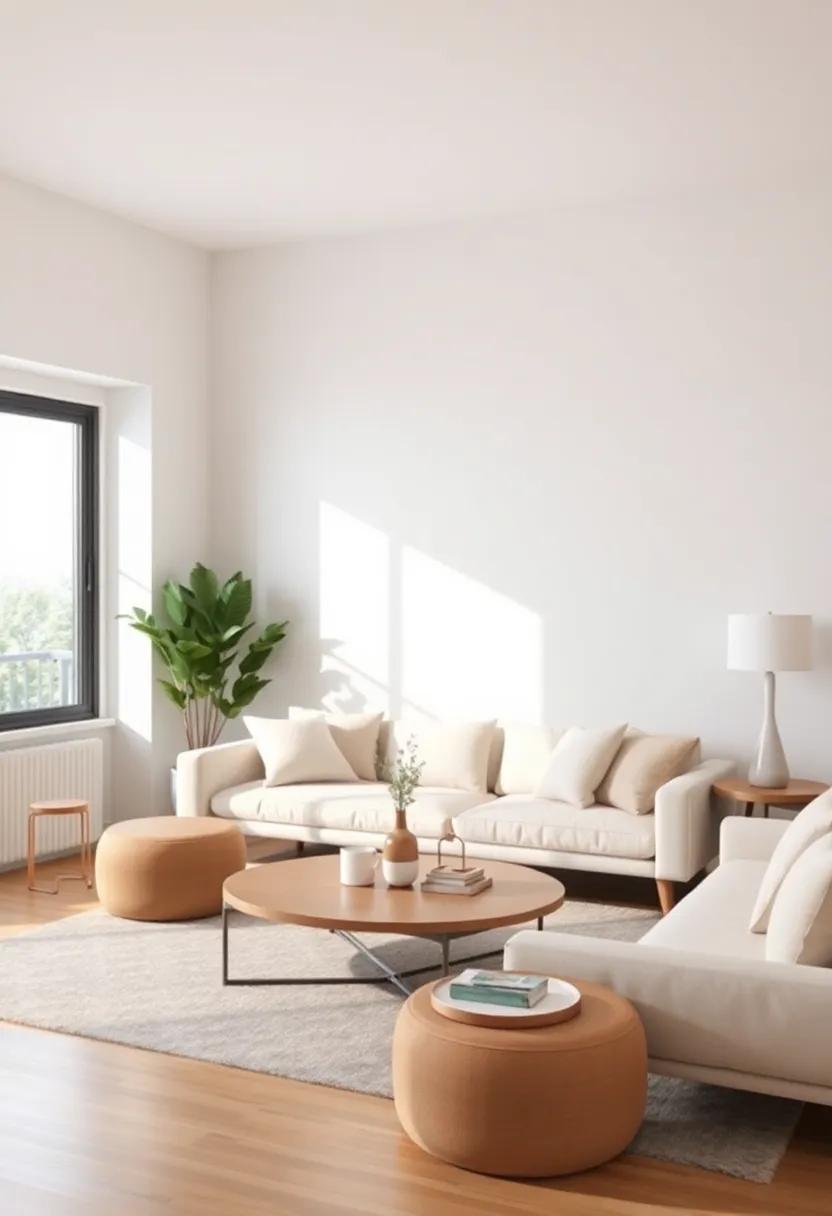
When selecting decor for a space defined by a neutral palette, aim for pieces that not only serve a purpose but also enhance the tranquil atmosphere. Consider incorporating natural materials such as wood, stone, and linen, which seamlessly blend with soft shades of beige, ivory, and gray.These elements add warmth and texture, making the room feel inviting while maintaining a sense of calm. A few suggested decor items include:
- Textured throw pillows in subtle tones to create depth.
- Earthy ceramics that introduce an organic feel.
- Minimalist lighting fixtures that cast gentle illumination.
In addition to functional items, don’t shy away from art that speaks to your personal style. Choose abstract prints or monochromatic landscapes that resonate with the color scheme and evoke serenity. A well-placed statement piece can serve as a focal point without overwhelming the space. For your consideration, here’s a compact table highlighting complementary decor styles:
| Decor Type | Color Influence | Suggested Material |
|---|---|---|
| Wall Art | Subtle Tones | Canvas, Wood |
| Furniture | Warm Neutrals | Natural Wood, Metal |
| Accessories | Textured Hues | Fabric, Stone |
Closing Remarks
As we conclude our exploration of serene color palettes for a neutral minimalist living room, it’s clear that simplicity is not merely a design choice but a lifestyle.the colors you choose can transform your space into a sanctuary, fostering an atmosphere of calm and clarity. By embracing soft hues and understated tones,you can create an inviting environment that nurtures relaxation and creativity.
Remember,minimalism isn’t just about reducing clutter; it’s about curating a sense of peace within your surroundings. As you embark on your journey towards a serene living space,let each color reflect your personal aesthetic and promote tranquility in your daily life.simplicity is the ultimate sophistication. May your chosen palette not only beautify your home but also nourish your spirit. Here’s to embracing serenity, one paint swatch at a time.
As an Amazon Associate I earn from qualifying purchases.
 theFASHIONtamer Where Style Meets Space, Effortlessly
theFASHIONtamer Where Style Meets Space, Effortlessly 